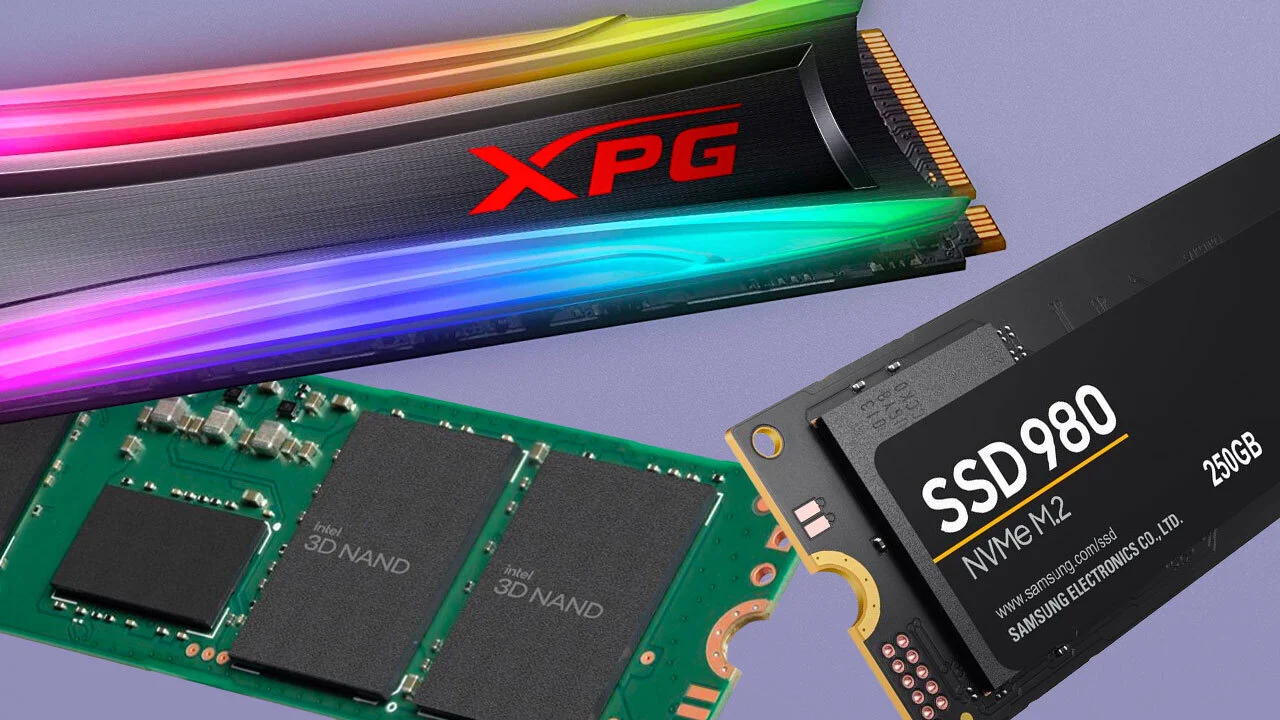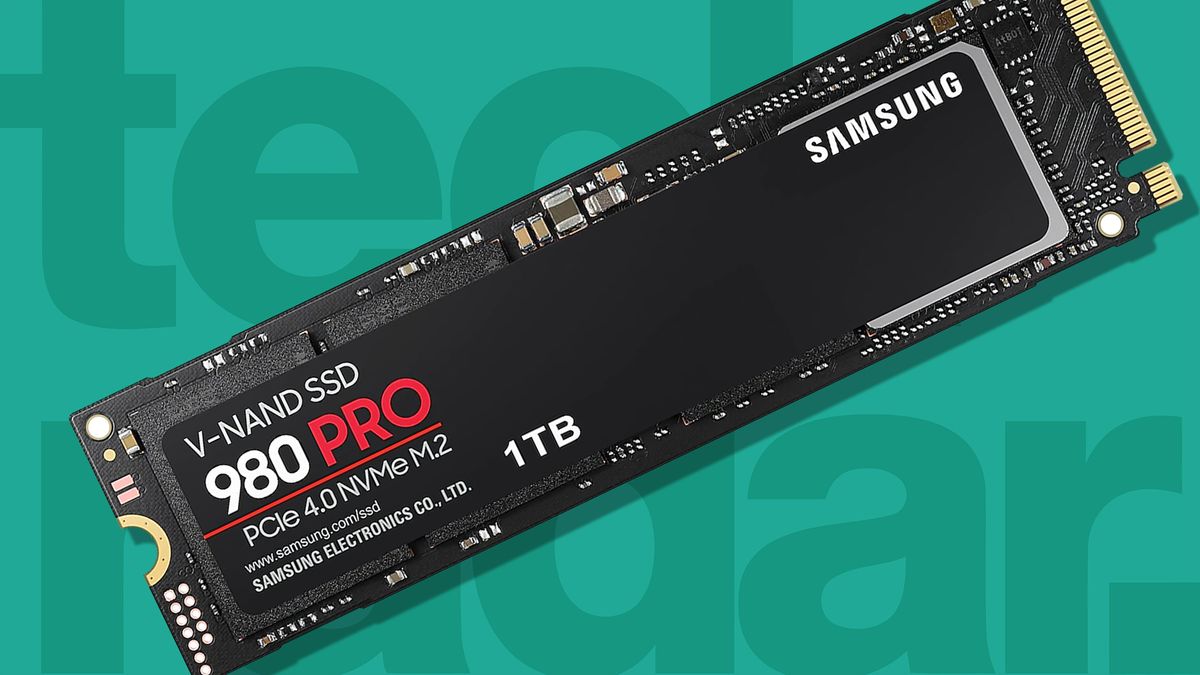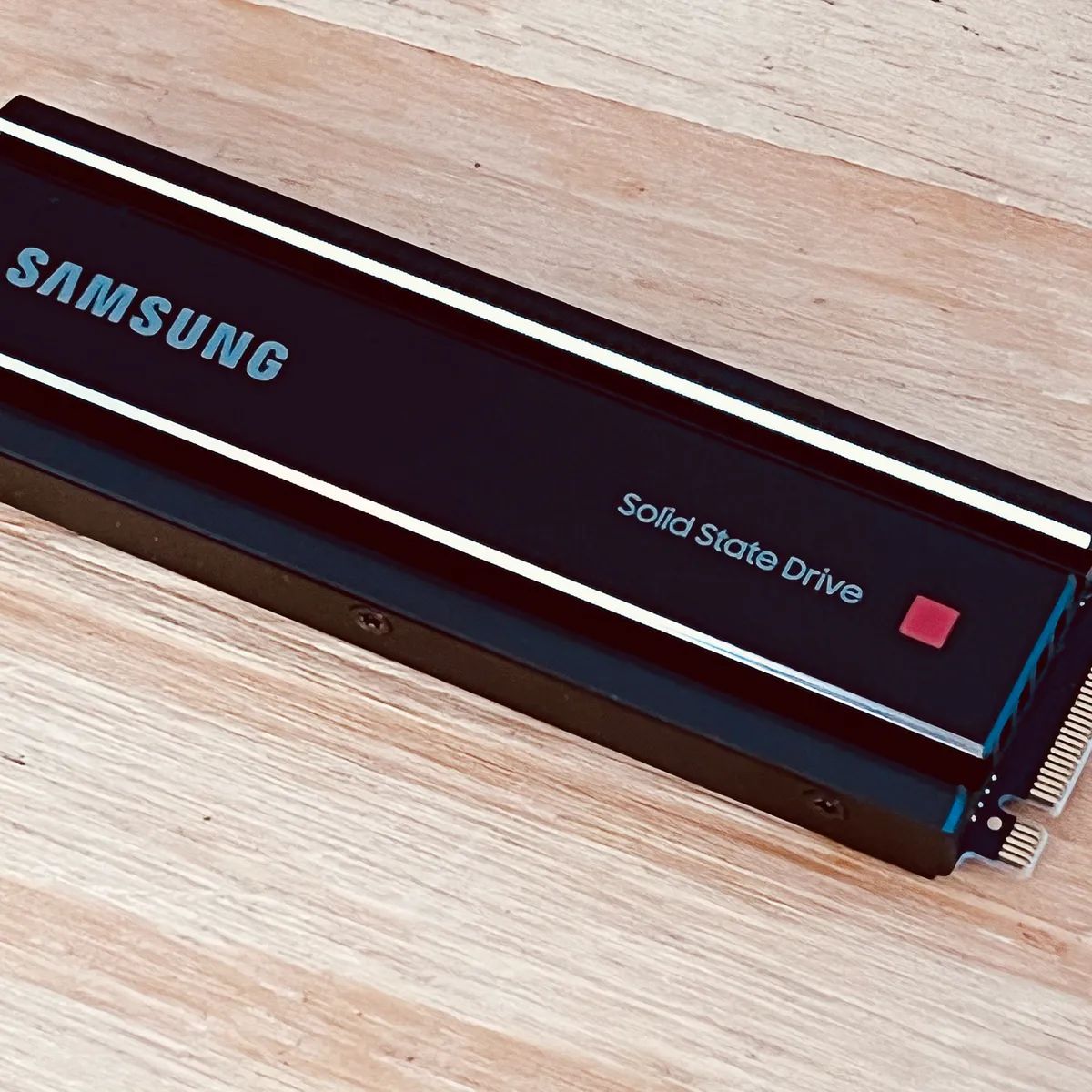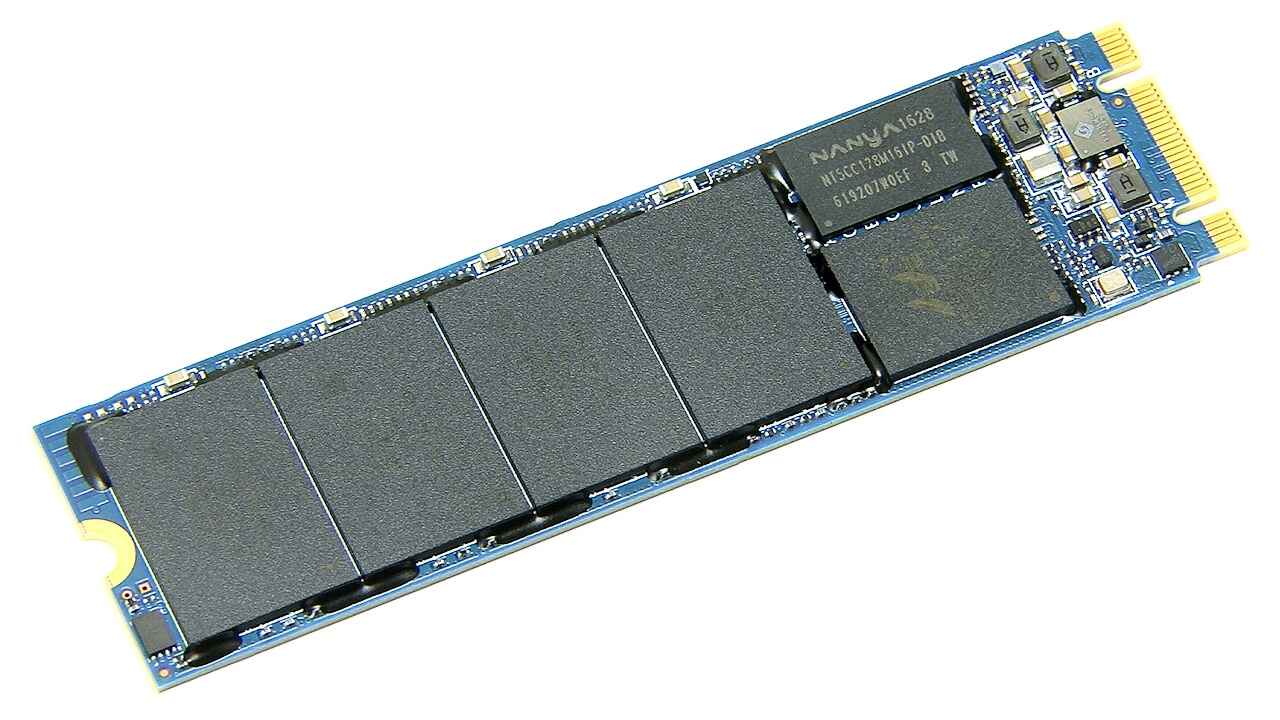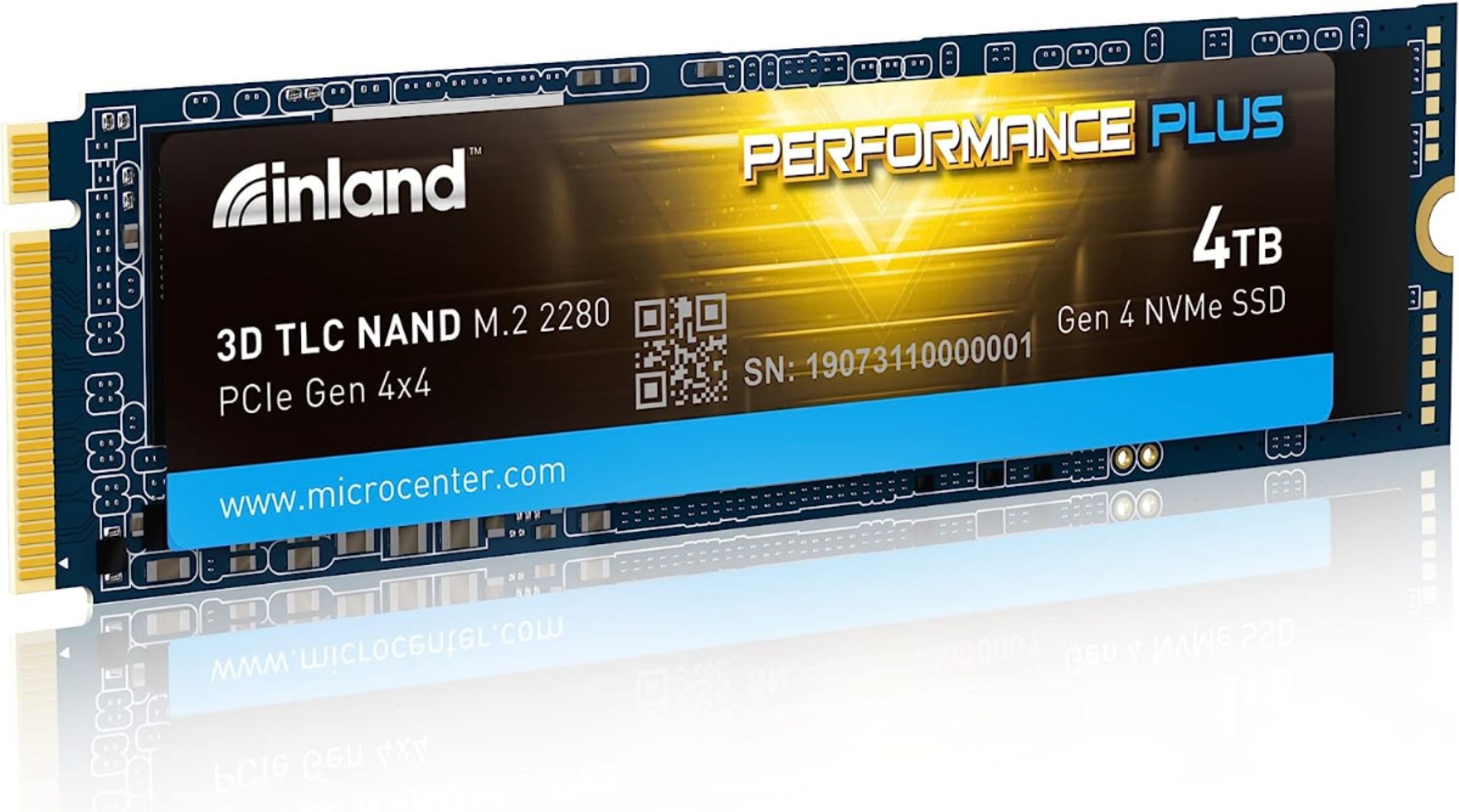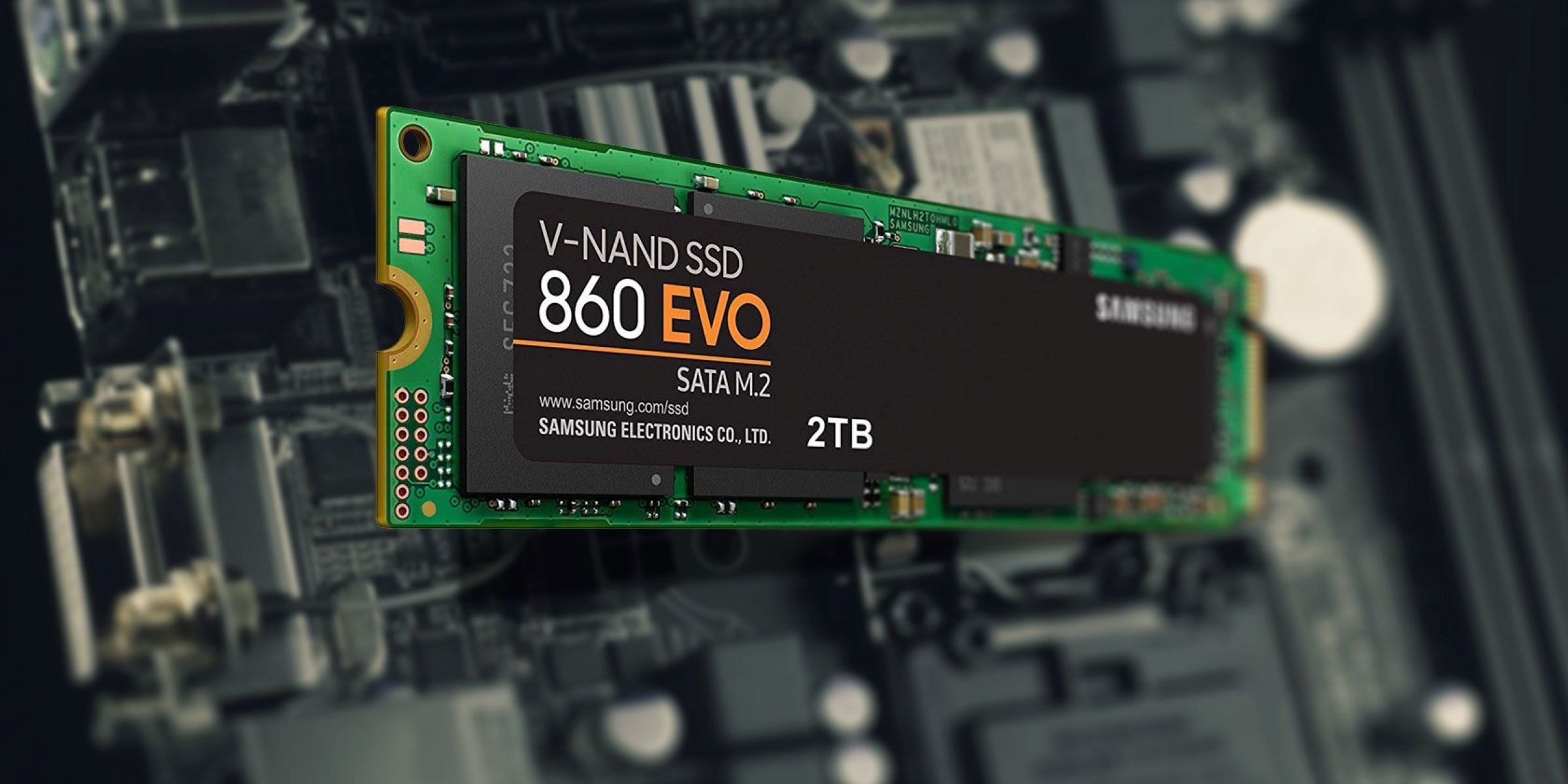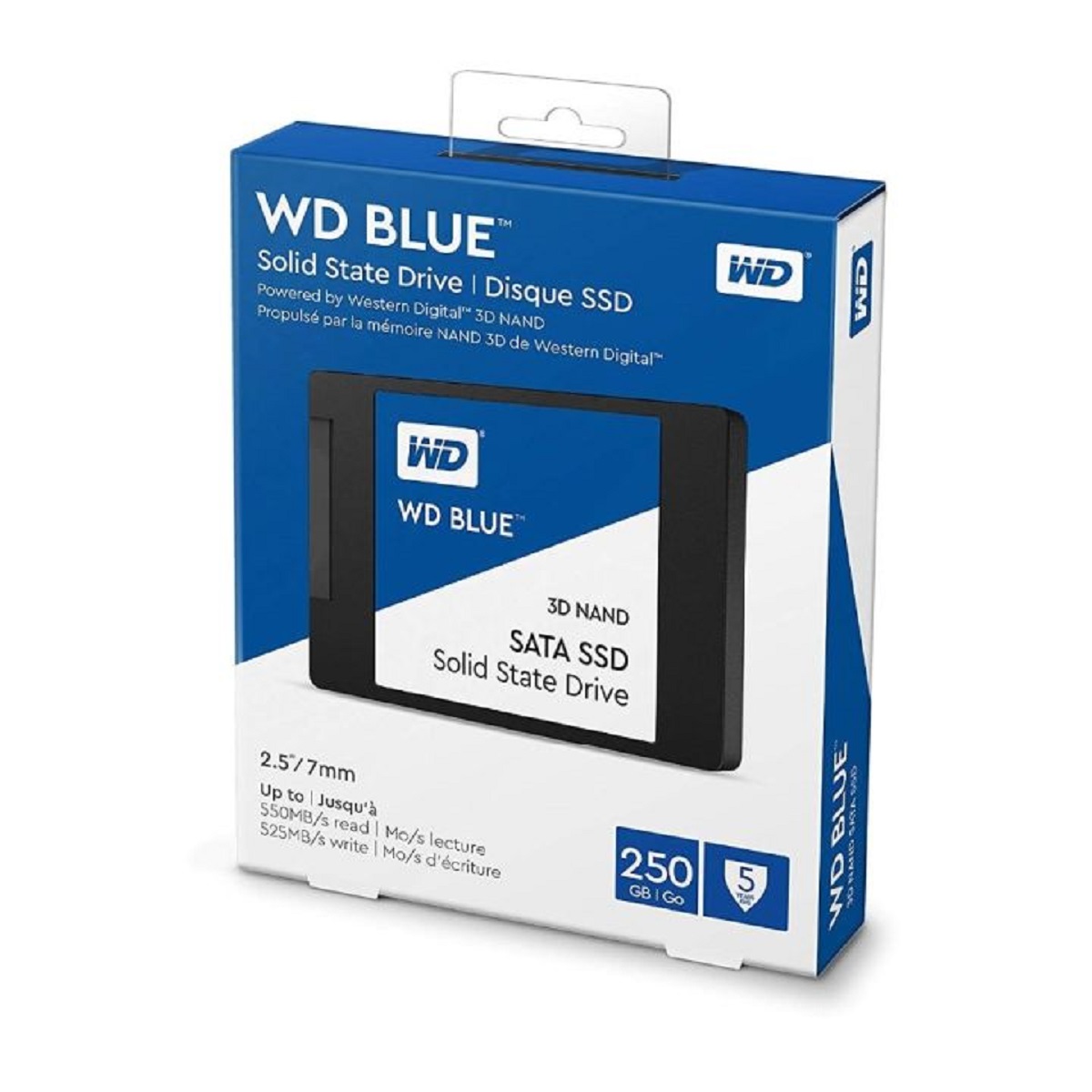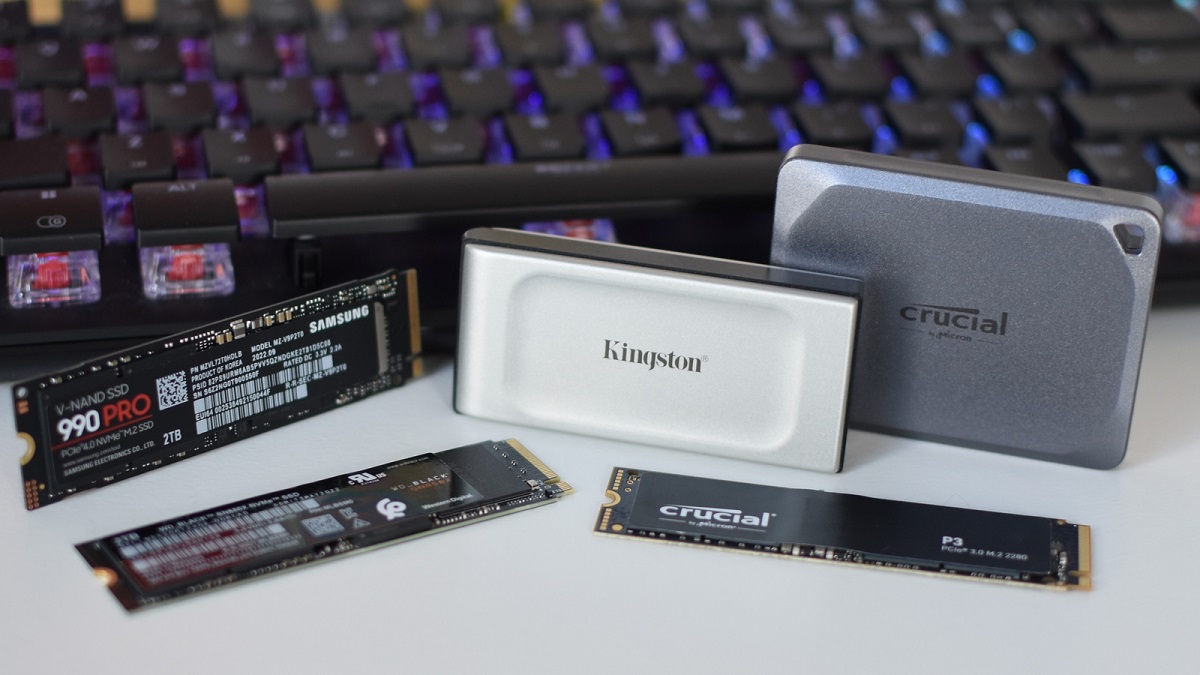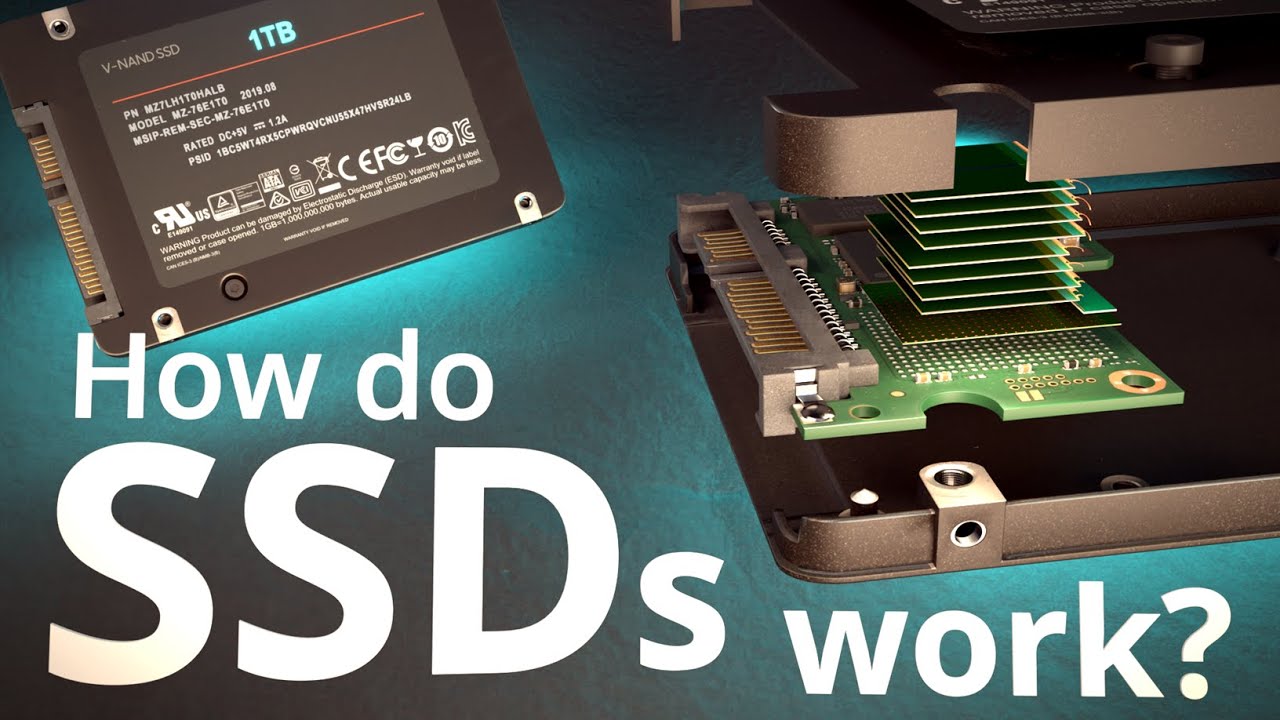Introduction
A solid state drive (SSD) is a type of storage device that has gained immense popularity in recent years due to its advanced technology and superior performance compared to traditional hard disk drives (HDDs). It uses a series of flash memory chips to store data, allowing for faster access and greater reliability. However, within the realm of SSDs, a new technology has emerged that takes speed and performance to a whole new level – the NVMe solid state drive.
NVMe, short for Non-Volatile Memory Express, represents a breakthrough in SSD technology, offering significantly faster data transfer rates and reduced latency compared to its SATA-based counterparts. This innovative interface protocol is designed to take full advantage of the capabilities of solid state storage, unleashing the true potential of high-speed flash memory.
In this article, we will delve into the world of NVMe SSDs, exploring their features, advantages, and considerations when choosing one. Whether you’re a tech enthusiast, a professional gamer, or a content creator, understanding the ins and outs of NVMe SSDs is crucial for making informed decisions about your storage needs.
What is a Solid State Drive (SSD)?
A solid state drive (SSD) is a type of storage device that has revolutionized the way data is stored and accessed in modern computing. Unlike traditional hard disk drives (HDDs) that rely on spinning mechanical components, SSDs use flash memory technology to store data. This means that instead of storing data on spinning disks, SSDs store data on microchips, allowing for faster access and improved reliability.
SSDs offer several advantages over HDDs. First and foremost is their speed. SSDs can read and write data much faster than HDDs, resulting in significantly reduced boot-up times, faster file transfers, and improved overall system responsiveness. This speed boost is especially noticeable when running resource-intensive applications or multitasking.
In addition to speed, SSDs also offer enhanced durability and reliability. Since they do not have any moving parts, SSDs are less prone to physical damage caused by drops or impacts. This makes them ideal for portable devices like laptops and tablets. Furthermore, SSDs are less susceptible to data loss due to mechanical failure, making them a more reliable option for long-term storage.
Another significant advantage of SSDs is their energy efficiency. Unlike HDDs, which require a motor to spin the disks, SSDs consume considerably less power. This translates to longer battery life for laptops and less heat generated, which reduces the need for cooling mechanisms in desktop systems.
Furthermore, the compact size of SSDs makes them ideal for situations where space is limited. Whether you’re building a small form factor desktop or upgrading the storage on your laptop, SSDs offer a smaller footprint compared to traditional HDDs.
Overall, SSDs have revolutionized the storage landscape, providing faster speeds, improved durability, reduced power consumption, and a smaller form factor. As the demand for faster and more efficient storage solutions continues to grow, SSDs have become the go-to choice for both individual users and businesses alike.
What is NVMe?
NVMe, which stands for Non-Volatile Memory Express, is an advanced interface protocol specifically designed for solid state drives (SSDs). It is a replacement for the traditional SATA (Serial ATA) interface commonly used in both HDDs and SSDs. NVMe leverages the low-latency and high-parallelism nature of flash-based storage technology to deliver unparalleled performance.
Unlike SATA, which was originally designed for mechanical hard drives, NVMe takes full advantage of the capabilities of modern SSDs. It is built specifically to reduce latencies and maximize the throughput of flash memory, resulting in significantly faster data transfer rates and improved overall system responsiveness.
One of the key advantages of NVMe is its ability to utilize the PCIe (Peripheral Component Interconnect Express) interface, a high-speed serial bus that is commonly used for connecting graphics cards, network cards, and other high-performance peripherals. By leveraging the PCIe interface, NVMe SSDs can achieve blazing-fast data transfer rates, surpassing the limitations of SATA-based SSDs.
Moreover, NVMe drives can support a higher number of input/output operations per second (IOPS), enabling faster data access and retrieval. This is crucial for applications that require high levels of random read and write operations, such as databases, virtualization, and content creation.
Another notable feature of NVMe is its streamlined and efficient command set. Unlike SATA, which is characterized by its legacy command structure, NVMe employs a more modern and streamlined approach, reducing overhead and maximizing efficiency. This allows for faster communication between the SSD and the system, resulting in reduced latency and improved overall system performance.
Furthermore, NVMe drives have the advantage of being highly scalable. They can support a greater number of lanes, allowing for increased bandwidth and performance. This scalability makes NVMe the ideal choice for enterprise-level applications that demand high-speed storage solutions.
In summary, NVMe is a cutting-edge interface protocol designed specifically for solid state drives. It takes advantage of the capabilities of modern flash memory technology and leverages the high-speed PCIe interface to deliver unmatched performance, lower latency, and improved efficiency. With its faster data transfer rates, increased IOPS, and streamlined command set, NVMe has become the new standard for high-performance storage solutions.
Differences between NVMe and SATA SSDs
When it comes to solid state drives (SSDs), there are two main interface protocols that dominate the market – NVMe (Non-Volatile Memory Express) and SATA (Serial ATA). While both are used to connect SSDs to a computer system, there are significant differences between the two in terms of performance, compatibility, and cost.
The first and most notable difference is the speed. NVMe SSDs have significantly faster data transfer rates compared to SATA SSDs. The NVMe interface, designed specifically for flash memory technology, utilizes the high-speed PCIe (Peripheral Component Interconnect Express) interface. This allows for faster data transfer, resulting in quicker boot times, faster file transfers, and improved overall system responsiveness. SATA SSDs, on the other hand, are limited by the SATA interface, originally designed for mechanical hard drives, and therefore cannot achieve the same level of performance as NVMe drives.
Another key difference is the number of queues and commands that can be processed simultaneously. NVMe SSDs have a higher queue depth and can handle a larger number of commands at the same time. This is crucial for applications that require high levels of random read and write operations, as it allows for faster data access and retrieval. SATA SSDs, in comparison, have a lower queue depth and can handle fewer commands simultaneously, resulting in slightly slower performance in certain scenarios.
Compatibility is another aspect where NVMe and SATA SSDs differ. NVMe drives require a motherboard with an available M.2 or U.2 slot that supports the NVMe protocol. While many modern motherboards come with NVMe support, older systems may not have the necessary slots or may only support SATA SSDs. SATA SSDs, on the other hand, are compatible with a wider range of systems, as SATA interfaces are more commonly available.
Cost is also a factor to consider when comparing NVMe and SATA SSDs. NVMe drives tend to be more expensive than SATA drives. This is due to the advanced technology and higher performance capabilities of NVMe SSDs. However, the price difference is diminishing as NVMe drives become more mainstream and their production volumes increase.
In summary, the main differences between NVMe and SATA SSDs lie in their performance, compatibility, and cost. NVMe drives offer significantly faster data transfer rates and higher queue depths, making them ideal for applications that demand high-speed storage. However, they require compatible motherboard slots and tend to be more expensive. SATA SSDs, on the other hand, offer greater compatibility with a wide range of systems and are more affordable, although they are not as fast as NVMe drives. When choosing between NVMe and SATA SSDs, it is important to consider your specific needs, budget, and system requirements.
Advantages of NVMe SSDs
NVMe (Non-Volatile Memory Express) solid state drives (SSDs) offer several advantages over their SATA counterparts, making them a compelling choice for users seeking top-tier performance and efficiency.
One of the primary advantages of NVMe SSDs is their unmatched speed. Utilizing the high-speed PCIe (Peripheral Component Interconnect Express) interface, NVMe drives are capable of delivering significantly faster data transfer rates compared to SATA SSDs. This translates into blazing-fast boot times, rapid file transfers, and lightning-quick application load times. Whether you’re a gamer looking for smoother gameplay, a video editor working with large multimedia files, or a power user running resource-intensive applications, the speed of NVMe SSDs can dramatically enhance your overall computing experience.
Moreover, NVMe SSDs excel in random read and write operations, offering exceptionally high Input/Output Operations Per Second (IOPS). This is especially vital for tasks that heavily rely on random access, such as running virtual machines, rendering 3D graphics, or managing large databases. The fast and efficient data retrieval provided by NVMe drives ensures a seamless and responsive computing environment.
Another advantage of NVMe SSDs is their reduced latency. Traditional storage devices, including SATA SSDs, exhibit higher latency due to their interface protocol and architecture. NVMe, however, is specifically designed to minimize latency and maximize performance. The streamlined command set and parallel data processing capabilities of NVMe drives reduce data access delays and boost overall system responsiveness.
In addition to speed and low latency, NVMe SSDs offer improved power efficiency. They consume less power compared to SATA SSDs, resulting in lower energy consumption and longer battery life for portable devices. This is particularly beneficial for laptops, ultrabooks, and other mobile devices where battery usage is a critical factor.
Furthermore, NVMe SSDs are highly scalable. They can take advantage of the PCIe interface’s scalability and support a higher number of lanes, enabling increased bandwidth and performance. This makes NVMe drives the preferred choice for enterprise-level applications that require large amounts of high-speed storage, such as data centers, cloud computing, and server environments.
Overall, the advantages of NVMe SSDs are clear – exceptional speed, high IOPS, low latency, improved power efficiency, and scalability. Whether you’re a professional in need of top-notch performance or a casual user looking for an extra boost in speed, NVMe SSDs deliver unrivaled performance and efficiency that can significantly enhance your computing experience.
Considerations when choosing an NVMe SSD
When it comes to choosing an NVMe (Non-Volatile Memory Express) solid state drive (SSD), there are several key factors to consider to ensure that you select the right drive for your needs and maximize your investment.
The first consideration is the capacity of the NVMe SSD. Determine the amount of storage space you require based on your specific needs. If you work with large media files, such as videos or high-resolution images, or if you’re a gamer with a vast library of games, you may need a higher capacity drive. Conversely, if you primarily use your computer for web browsing and document editing, a lower capacity SSD may be sufficient. It’s important to strike a balance between storage needs and your budget.
Speed is another crucial aspect to consider. While all NVMe SSDs are faster than traditional hard drives, the speed can still vary among different models. Look for NVMe SSDs that offer high sequential read and write speeds. This will ensure faster boot times, improved file transfers, and enhanced overall system performance.
Endurance and reliability are also important considerations when choosing an NVMe SSD. Look for drives that are designed for durability and have a high TBW (Total Bytes Written) rating. A higher TBW rating indicates that the SSD is capable of handling a larger volume of data writes over its lifespan. Additionally, it’s recommended to choose SSDs from reputable manufacturers known for their reliable products and excellent customer support.
Consider compatibility as well. Check if the NVMe SSD you’re considering is compatible with your computer’s motherboard and operating system. Ensure that your motherboard supports the NVMe interface and that you have an available M.2 or U.2 slot for installation. Additionally, verify that your operating system has the necessary drivers to fully utilize the NVMe SSD’s capabilities.
Price is an important factor for many consumers. Compare the prices of various NVMe SSDs and consider the value they offer in terms of capacity, speed, endurance, and brand reputation. It’s important to find a balance between your budget and the performance and features you require.
Finally, consider additional features that may be important to you. Some NVMe SSDs offer built-in hardware encryption for enhanced data security. Others may have specialized software or utilities for monitoring and managing the SSD’s performance and lifespan. Determine if these features are crucial to your needs and select a drive accordingly.
By carefully considering these factors – capacity, speed, endurance, reliability, compatibility, price, and additional features – you can choose an NVMe SSD that meets your specific requirements and provides optimal performance for your computing needs.
How to Install and Use NVMe SSDs
Installing and utilizing an NVMe (Non-Volatile Memory Express) solid state drive (SSD) is a straightforward process that can greatly enhance your computer’s performance. Follow these steps to install and start using your NVMe SSD:
- Ensure that your computer’s motherboard supports NVMe SSDs. Check the manufacturer’s website or consult the user manual for compatibility information.
- Purchase an NVMe SSD that meets your storage capacity and performance requirements.
- Power off your computer and unplug it from the power source.
- Open your computer’s case or access panel to gain access to the internal components.
- Identify the M.2 slot on your motherboard where the NVMe SSD will be installed. It is usually labeled and located near the PCIe slots, but the exact location may vary depending on your motherboard model.
- Remove the protective cover from the NVMe SSD, if applicable.
- Insert the NVMe SSD into the M.2 slot at a slight angle and gently press it down until it is fully seated in the slot.
- Secure the NVMe SSD with the provided screw(s) to ensure it stays in place.
- Close the computer case or reattach the access panel.
- Plug in and power on your computer.
- Once your computer has booted up, access the BIOS or UEFI settings by pressing the designated key during startup (commonly Esc, Del, F2, or F12).
- In the BIOS/UEFI settings, navigate to the storage or drive configuration section.
- Locate the NVMe SSD in the list of available drives and set it as the primary or boot drive, if desired.
- Save the changes and exit the BIOS/UEFI settings. Your computer will restart.
- Upon restarting, your operating system should recognize the NVMe SSD as a new storage device.
- To fully utilize the NVMe SSD’s capabilities, consider updating its firmware and installing any necessary drivers or software provided by the manufacturer.
- Format the NVMe SSD and partition it if required. This can be done through your operating system’s disk management tools.
- You can now start using your NVMe SSD for installing programs, storing files, and enjoying the improved speed and performance it offers.
Remember to regularly update the firmware for your NVMe SSD to ensure optimal performance and stability. Additionally, make sure to back up your important data regularly to prevent data loss in the event of a drive failure.
By following these steps, you will be able to install and make full use of your NVMe SSD, unlocking its high-speed capabilities and enhancing your overall computing experience.
Conclusion
NVMe (Non-Volatile Memory Express) solid state drives (SSDs) have revolutionized the storage landscape, offering unmatched speed, performance, and efficiency compared to traditional hard disk drives (HDDs) and SATA-based SSDs. The NVMe interface protocol, designed specifically for flash memory technology, maximizes the potential of high-speed storage, delivering lightning-fast data transfer rates, reduced latency, and improved overall system responsiveness.
Throughout this article, we have explored the fundamentals of NVMe SSDs, understanding their features, advantages, and considerations when choosing one. We learned how NVMe drives outperform SATA SSDs in terms of speed, IOPS, and latency, enabling seamless multitasking, faster file transfers, and quicker application launches.
One of the key advantages of NVMe SSDs is their ability to leverage the PCIe interface, which results in significantly faster data transfer rates. Additionally, the high scalability, improved power efficiency, and enhanced durability of NVMe drives make them ideal for both personal and enterprise use.
When considering an NVMe SSD, it’s essential to factor in the capacity, speed, endurance, compatibility, price, and any additional features that may be important to your specific needs. By making an informed decision based on these considerations, you can choose an NVMe SSD that perfectly aligns with your requirements and provides optimal performance.
Installing and using NVMe SSDs is a straightforward process, and once installed, they can greatly enhance your computer’s performance. By following the steps outlined in this article, you can effortlessly install and enjoy the benefits of an NVMe SSD, such as faster boot times, improved productivity, and a smoother computing experience.
In conclusion, NVMe SSDs have revolutionized storage technology, offering unparalleled speed, performance, and efficiency. With their ability to deliver faster data transfer rates, lower latency, and increased scalability, NVMe SSDs are the go-to choice for users seeking top-tier storage solutions. Upgrade your system with an NVMe SSD and experience the transformative power of this cutting-edge technology.







